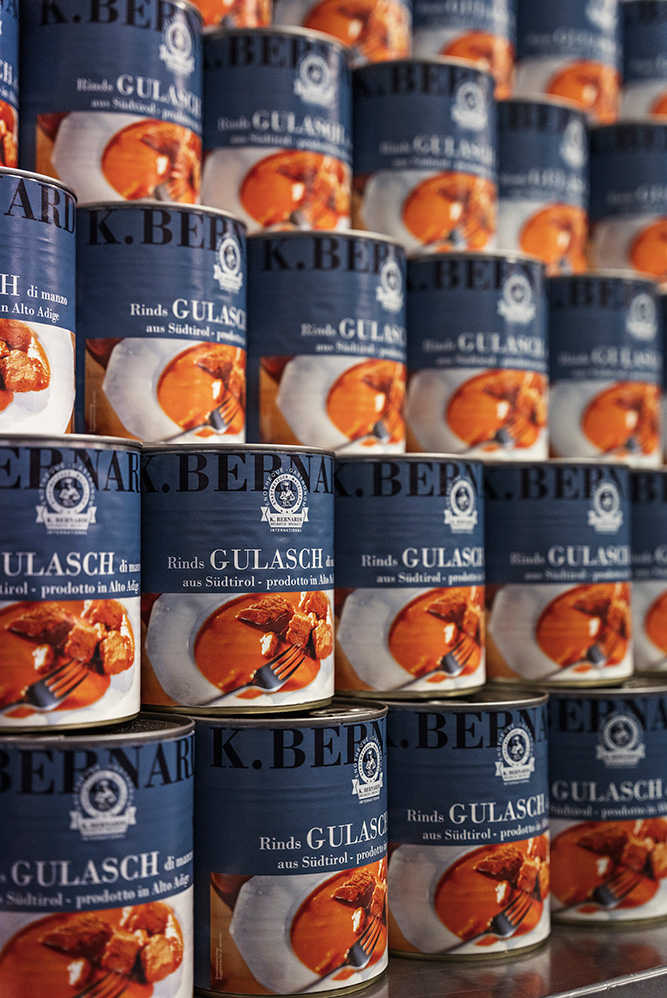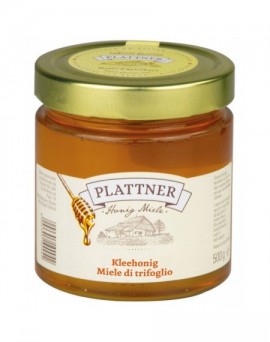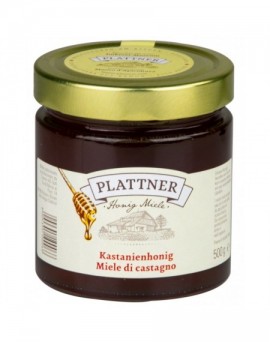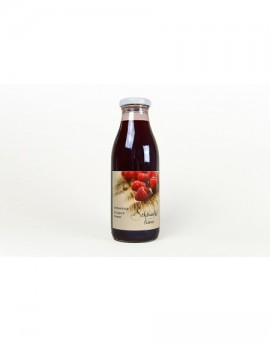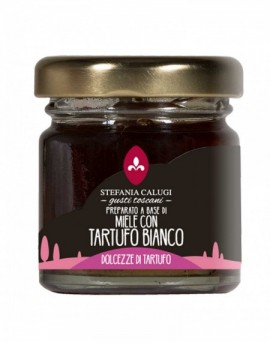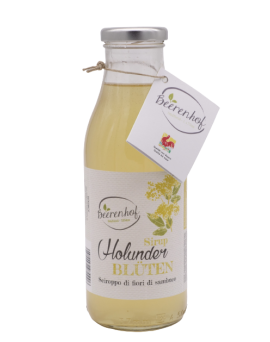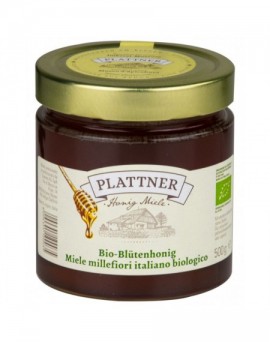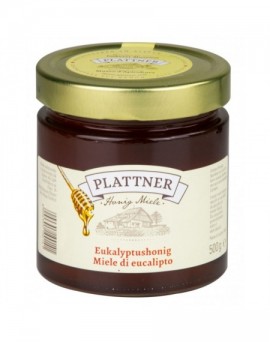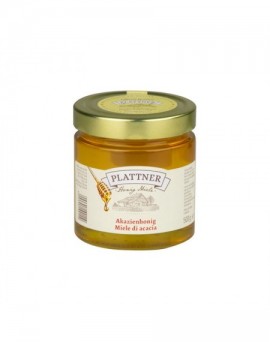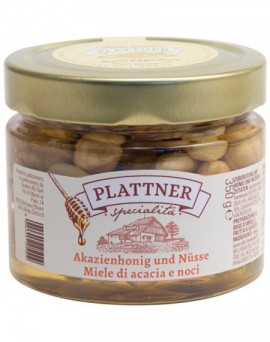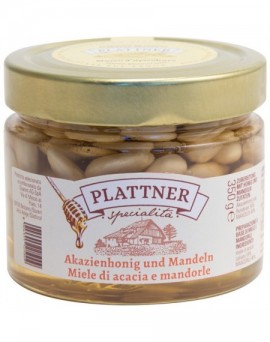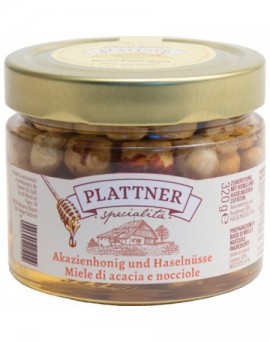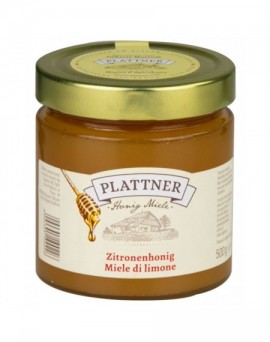Basket
0
Bienenhof chestnut honey...
Its colour varies from nut-brown to amber and it smells of wood, its taste is bittersweet. This varietal honey is obtained from the nectar of the chestnut tree blossom.<br /><br />Our popular Plattner Bienenhof chestnut honey is made from the nectar of the chestnut tree blossom and tastes slightly tart. It reminds of tannins and wood in the nose as<br />well as in the mouth. These flavours make it slightly less sweet and more liquid compared to others. Plattner Bienenhof Kastanien honey is a great accompaniment to<br />mature cheese, but also tastes great when enjoyed traditionally.<br /><br />On average, our honey contains about 17-19% water, about 70% simple sugars (carbohydrates in the form of glucose and fructose), about 2.5% sucrose, about 0.1% other<br />sugars and about 8% other substances. These naturally occurring components are: Acids, lactones, mineral salts, proteins, amino acids, vitamins, colloids and aromatic<br />substances.<br /><br />Honey, with about 300 kilocalories per 100 grams, is an energy-rich natural product, quickly digestible and well and rapidly absorbed by the body.<br /><br />Honey is a living food!<br /><br />It is even said to have some interesting positive properties on the human body: sedative (calming), antiseptic (germicidal), antianemic (increases red blood cells), diuretic<br />(increases water excretion), and many more.<br /><br />The freshly harvested honey is liquid, but can crystallise over time. This process is quite natural and the crystallised honey can be liquefied again in a warm water bath (up<br />to 40° C).<br /><br />Honey is not suitable for children or babies under 12 months.<br /><br />Country of origin: Italy<br />
Price
€11.70
Honey with white truffle...
Honey preparation with white truffle<br /><br />Ingredients: Honey (origin Tuscany) 96%, white truffle (Tuber borchii Vitt. - origin Italy)<br />2,5%, white truffle (Tuber magnatum Pico - origin Italy) 1%, aroma.<br />Storage: Once opened, store in the fridge between 0 and + 4° C and consume within a few days.<br />a few days.<br />Nutritional values per 100 g of product:<br />Energy 1429 kJ (336 kcal)<br />Fats 00,0 g<br />of which saturated fatty acids 00,0 g<br />Carbohydrates 78,0 g<br />of which sugars 78,0<br />Protein 6.0 g<br />Salt 0.03 g<br />
Price
€9.90
Elderflower syrup 500ml...
... tastes very refreshing and is not too sweet. The syrup can be diluted with water as desired - our suggestion: 1:7.<br /><br />Ingredients: 60% elderflower extract (water, high proportion of elderflowers), sugar, juice of the Northern Lemon (Chaenomeles japonica or also Cido).<br /><br />Depending on the weather (autumn must be warm, otherwise the harvest will fail), the black and blue elderberries are sometimes also made into syrup and fruit spreads.<br /><br /><br />Info on the Nordic lemon<br />The Nordic lemon contains more vitamin C than the conventional lemon. Temperatures as low as -40°C are no problem for them. That is why it is ideally suited for cultivation<br />in our fields. Originally it comes from Latvia, where it is still cultivated and used today as 'the' lemon. Its fruit is very acidic and not suitable for immediate fresh<br />consumption. We use the juice of the Nordic lemons as a substitute for citric acid, which is partly produced artificially. The plant of the Nordic lemon blossoms fiery red from<br />April to June and has a refreshing fragrance. The fruits are harvested in mid-October.<br /><br />Average nutritional values per 100ml<br />Energy: 680kJ/160kcal<br />Fat: < 0,5g<br />thereof saturated fatty acids: < 0,1g<br />Carbohydrates: 40g<br />thereof sugar: 40g<br />Protein: < 0,5g<br />Salt: 0.10g<br />
Price
€7.20
BIO flower honey 500g...
Light brown to amber colourLight brown to amber colour, aromatic-scented honey obtained from the nectar of many different flowers.<br /><br />Plattner Bienenhof BIO flower honey is made from the nectar of many colourful flowers. It has an aromatic taste, is light brown in colour and sometimes resembles amber.<br />Our organic blossom honey is ideal for baking and sweetening. Enjoyed as a spread with butter and brown bread, Plattner Bienenhof Organic Blossom Honey is simply part<br />of breakfast.<br /><br />Country of origin: Italy<br />
Price
€13.30
Bienenhof Eucalyptus Honey...
Amber-coloured honey, smells rather untypically of wet leaves, liquorice or dried mushrooms, tastes malty-spicy like caramel. Originates from eucalyptus trees, which are<br />very common in the Mediterranean region.<br /><br />Plattner Bienenhof Eucalyptus Honey comes from the eucalyptus trees, which are very common in the Mediterranean region, and it tastes unusually spicy-malty like<br />caramel or cappuccino. On the nose, the honey is rather atypical with notes of dried mushrooms, wet leaves and liquorice. Eucalyptus honey crystallises quickly and then<br />changes colour to beige-grey. Like the essential oils of the plant, our Plattner Bienenhof eucalyptus honey is used to treat colds and respiratory infections. It is also exciting<br />to combine eucalyptus honey with ripened cheese: sheep's milk or Parmigiano, for example.<br /><br />On average, honey contains about 17-19% water, about 70% simple sugars (carbohydrates in the form of glucose and fructose), about 2.5% sucrose, about 0.1% other<br />sugars and about 8% other substances. These naturally occurring components are: Acids, lactones, mineral salts, proteins, amino acids, vitamins, colloids and aromatic<br />substances.<br /><br />Honey, with about 300 kilocalories per 100 grams, is an energy-rich natural product, quickly digestible and well and rapidly absorbed by the body.<br /><br />Honey is a living food!<br /><br />It is even said to have some interesting positive properties on the human body: sedative (calming), antiseptic (germicidal), antianemic (increases red blood cells), diuretic<br />(increases water excretion), and many more.<br /><br />The freshly harvested honey is liquid, but can crystallise over time. This process is quite natural and the crystallised honey can be liquefied again in a warm water bath (up<br />to 40° C).<br /><br />Honey is not suitable for children or babies under 12 months.<br /><br />Country of origin: Italy<br />
Price
€13.60
Bienenhof Acacia Honey 500g...
Pale often yellowish-golden honey, smells sweet and unobtrusive, reminiscent of vanilla in the mouth, is obtained from the nectar of the (often) white robinia flowers.<br /><br />Our Plattner Bienenhof Acacia Honey is harvested from the large (often) white flowers of the false acacia (robinia). Its mildly fine, sweetish taste is reminiscent of vanilla and<br />its smell of fresh beeswax and delicate flowers. Acacia honey is very popular with children, suitable as a sweetener and remains liquid for a long time. Our Plattner<br />Bienenhof Acacia Honey comes from natural, intact forests.<br /><br />On average, our honey contains approx. 17-19% water, approx. 70% simple sugars (carbohydrates in the form of glucose and fructose), approx. 2.5% sucrose, approx.<br />0.1% other sugars and approx. 8% other substances. These naturally occurring components are: Acids, lactones, mineral salts, proteins, amino acids, vitamins, colloids<br />and aromatic substances.<br /><br />Honey, with about 300 kilocalories per 100 grams, is an energy-rich natural product, quickly digestible and well and rapidly absorbed by the body.<br /><br />Honey is a living food!<br /><br />It is even said to have some interesting positive properties on the human body: sedative (calming), antiseptic (germicidal), antianemic (increases red blood cells), diuretic<br />(increases water excretion), and many more.<br /><br />The freshly harvested honey is liquid, but can crystallise over time. This process is quite natural and the crystallised honey can be liquefied again in a warm water bath (up<br />to 40° C).<br /><br />Honey is not suitable for children or babies under 12 months.<br /><br />Country of origin: Italy<br />
Price
€11.70
Mixed nuts in mild-fine...
Mixed nuts in mild-fine acacia honey.<br /><br />Hazelnuts, walnuts, almonds and cashews and delicious acacia honey combine to create a high-quality, deliciously natural treat. The delicate aroma of the nuts harmonises<br />perfectly with this selected acacia honey, which is never overpowering and scores with its natural sweetness.<br /><br />Origin: Hungarian acacia honey, hazelnuts and almonds from California, walnuts from Chile and cashews from Vietnam.<br />
Price
€11.70
Peeled almonds in delicate...
Peeled almonds in delicate acacia honey.<br /><br />The mildly fine acacia honey envelops the peeled almonds and they unite to form a deliciously natural treat! The fine aroma of the almonds harmonises perfectly with this<br />high-quality acacia honey, which is never obtrusive and scores with its natural sweetness.<br /><br />Origin: Hungarian acacia honey, Californian almonds.<br />
Price
€10.70
Peeled hazelnuts in...
Peeled hazelnuts in delicate acacia honey.<br /><br />The high-quality, mild-fine acacia honey blends ideally with the scent and taste of peeled hazelnuts to create a deliciously natural treat. The aroma of the hazelnuts<br />harmonises perfectly with this high-quality acacia honey, which is never overpowering and scores with its natural sweetness.<br /><br />Origin: Hungarian acacia honey, Californian hazelnuts.<br />
Price
€10.70
Honey lemon PLATTNER 500g
Plattner Bienenhof lemon honey is harvested from the nectar of the seductively fragrant blossoms of the lemon bush. It smells delicately of flowers and freshly of citrus fruits.<br />In the mouth it tastes as flowery and fresh as it smells. Plattner Bienenhof lemon honey is a great edible honey and can be used in many ways.<br /><br />On average, our honey contains about 17-19% water, about 70% simple sugars (carbohydrates in the form of glucose and fructose), about 2.5% sucrose, about 0.1% other<br />sugars and about 8% other substances. These naturally occurring components are: Acids, lactones, mineral salts, proteins, amino acids, vitamins, colloids and aromatic<br />substances.<br /><br />Honey, with about 300 kilocalories per 100 grams, is an energy-rich natural product, quickly digestible and well and rapidly absorbed by the body.<br /><br />Honey is a living food!<br /><br />It is even said to have some interesting positive properties on the human body: sedative (calming), antiseptic (germicidal), antianemic (increases red blood cells), diuretic<br />(increases water excretion), and many more.<br /><br />The freshly harvested honey is liquid, but can crystallise over time. This process is quite natural and the crystallised honey can be liquefied again in a warm water bath (up<br />to 40° C).<br /><br />Honey is not suitable for children or babies under 12 months.<br /><br />Country of origin: Italy<br />
Price
€13.10

